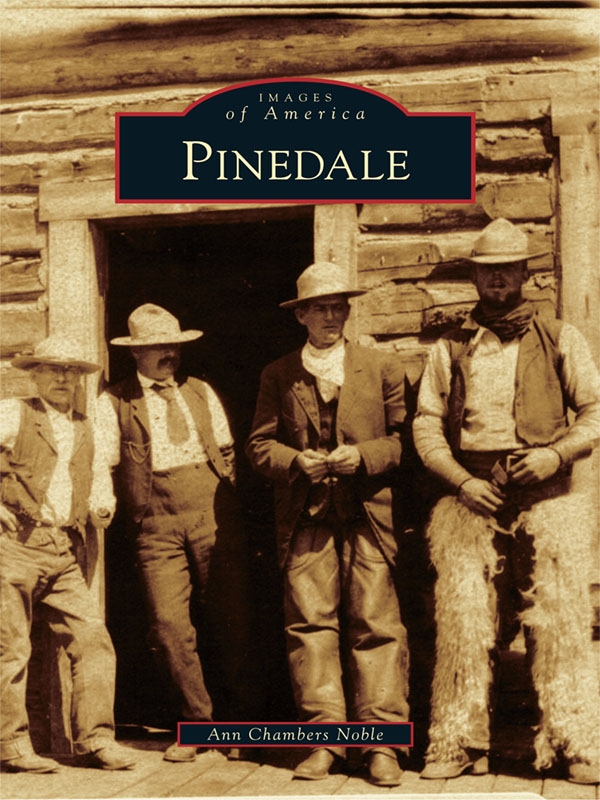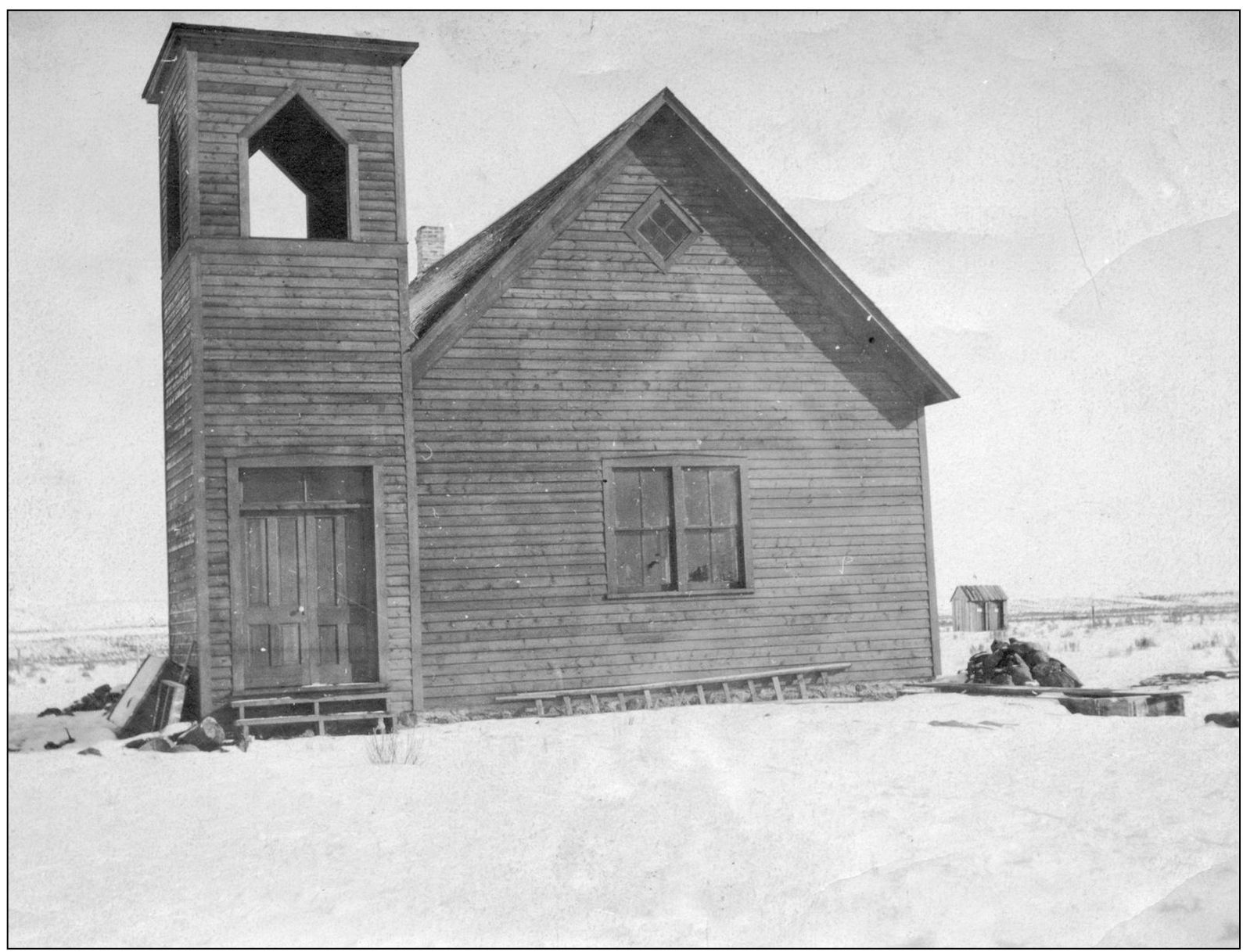One
THE EARLY YEARS
Charles A. Petersen is seen here with his family at his first cabin on Pine Creek in the late 1890s. He would later donate five acres of his ranch land to help create the town of Pinedale. The familys last two children, of eight, were born on this ranch. Petersen claimed he had the first baby in the town, though it was before Founders Day and south of the town site. (Courtesy of Sublette County Historical Society.)
Children pose for a school picture at the Charles A. Petersen ranch in 1903. Children attending this school were from the Cantlin, Bloom, Bayer, Allen, Sweeney, and Petersen families. Frank E. McGrew, not pictured, was their teacher. McGrew, referred to by the locals as Professor, became the first teacher in Pinedale when the town built its first school in 1904. (Courtesy of Paul Allen.)
Pinedales first saloon was located on the Petersen ranch, pictured here. The large man standing is Charles Petersen. This was the original building that housed the first Pinedale Post Office, until Petersen went into the saloon business; at which time he had the post office turned over to Celia Graham, who took the office into her home. (Courtesy of Sublette County Historical Society.)
These freight wagons to Pinedale began their trip in Rock Springs, Wyoming, the nearest railhead town, located 100 miles away. Four and six horses are pulling these wagons. Larger freight wagons often used 12 horses pulling four wagons at a time with loads up to 20,000 pounds. This was the only available means to bring supplies to Pinedale in the early 1900s. (Courtesy of Sublette County Historical Society.)
Boots Williams stands on the left next to an unidentified man in front of Pinedales first building, the Franklin Mercantile Company, owned by John F. Patterson, the towns founder. The photograph was taken in 1905, when the town was only a year old. (Courtesy of Sublette County Historical Society.)
C. Watt and Mayme Brandon stand in front of their Pinedale Roundup Building on July 4, 1905. Brandon came to Pinedale at the request of his uncle, John Patterson, to start a newspaper. The first issue of his paper , the Pinedale Roundup, rolled off the press on September 8, 1904, a few weeks before the towns Founders Day. (Courtesy of Sublette County Historical Society.)
Early Pinedale settlers Bunch Glover and Mrs. Jack Reynolds travel in a two-horse open sleigh in the early 1900s. Because of the long winters, sleighs were a necessary form of transportation. (Courtesy of Sublette County Historical Society.)
This eight-horse freight train is pulling three wagons plus the cooster. It is on Franklin Street, in front of the Pinedale Roundup Building and the Woodman Hall, about 1908. The freighters home on the road was the cooster, set up much like a sheepherders wagon. A trip from Rock Springs to Pinedale usually took two weeks, weather and floods cooperating! (Courtesy of Sublette County Historical Society.)
Fremont Lake was a popular gathering place year-round. This group of Pinedale locals was fishing and picnicking on January 17, 1904. From left to right are Elsie Winn Faler (Mrs. Ralph Faler), a Mrs. Winn, Beulah Montrose, Phil Burch, Nettie Hoff, Jennie Faler, Alice Montrose, Bunch Glover, Dr. J. W. Montrose, Lena Edmunson, Bert Clark Sr., Lee Edmunson, Frank McGrew, and Ralph Faler. (Courtesy of Sublette County Historical Society.)
On July 17, 1910, a Community Church building was dedicated on the corner of Mill Street and Maybel Avenue, facing west on land donated by John F. and Maybel Patterson. The Congregationalists were largely the builders of this church, but it was initially dedicated as a Community Church to be used by different denominations. (Courtesy of Ellen Cole.)
This early photograph of Pinedale looks south down Franklin Avenue in 1906. Buildings on the left (east) side of the street are the Pinedale Roundup Building and post office, Woodman Hall (the first two-story building in town), and the schoolhouse. On the west side, from left to right, are Sturdevants drugstore, Franklin Mercantile Company or Patterson Store, and the Patterson home. (Courtesy of Paul Allen.)


























